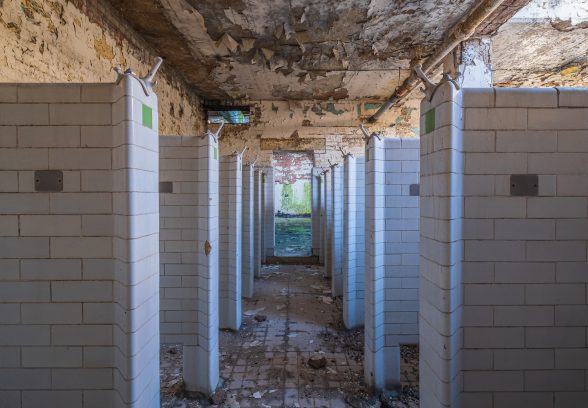This website uses cookies
This website uses cookies to enable it to function properly and to analyse how the website is used. Please click 'Close' to accept and continue using the website.



Miners’ Modernism: Pithead Baths – Past, Present and Future is a new collaborative research project between Queen’s University Belfast and the Twentieth Century Society, with funding from The Paul Mellon Centre and the UKRI, and supported by the national mining museums of England, Scotland and Wales.
Described in 1939 by critic Anthony Bertram as “a colossal social experiment taking architectural form”, pithead baths – which allowed coal miners to wash at work before returning home – were a pioneering, progressive welfare programme that predated the creation of the National Health Service by more than two decades. Yet their legacy is virtually unknown and the potential heritage value of surviving examples remains under-explored.
This project aims to ascertain exactly how many of these ground-breaking buildings remain across the country, in what state of repair, and what potential there may be for future restoration or rehabilitation.

From 1926 until the early 1960s, the team of architects at the Miners’ Welfare Committee/Commission (MWC) designed and built more than 800 pithead baths in coalfields across the country. These facilities were funded by a democratic redistribution of wealth, and allocated according to need by national, regional and district committees consisting of miners, colliery owners, and government representatives.
At their height pithead baths served more than a half a million workers, with the lives and health of many more women and children simultaneously transformed by the benefits these buildings brought to their domestic circumstances. Their architecture combined new international thinking on the social, scientific, and medical benefits of bathing, leading to the development of industrial baths, within a new iterative European modernist language. Particular inspiration was drawn from the Dutch architecture of Willem Marinus Dudok (1884-1974), and his ‘brick cathedral’ Hilversum Town Hall was a highly influential in terms of materiality and massing.
However, pithead baths have received scant recognition within architectural and social history. What research has been carried out has focussed on past achievements, with almost no attention paid to the programme’s remaining residues, its international influence, and its significant contribution to public health across the UK.




Survivors
Our research so far has identified around 70 surviving examples of pithead bath buildings in Britain, in various states repair and use. We can broadly categorise these types of re-use as follows:
The map below plots the approximate grid coordinates of every colliery that had constructed a pithead bath building up until 1940 (numbering 375), using data from a Miners Welfare Commission report located in the National Archives. More were constructed in the post-war years (up 800), though comparable data summarising these has yet to be sourced.
How many of these still survive, and are there more examples out there yet to be found? Almost certainly. There’s no substitute for local knowledge, and here we need your help!
If you know of a surviving pithead bath building in your area, or of local heritage and interest groups that may do, please search for the colliery to submit an update and images via the database below. Know of a building but can’t find the colliery in the list? Email caseworker@c20society.org.uk to notify us of any omissions.






Become a C20 member today and help save our modern design heritage.